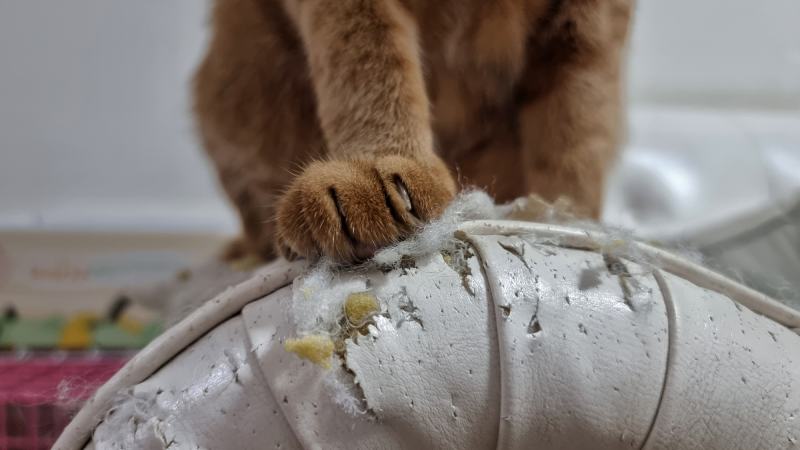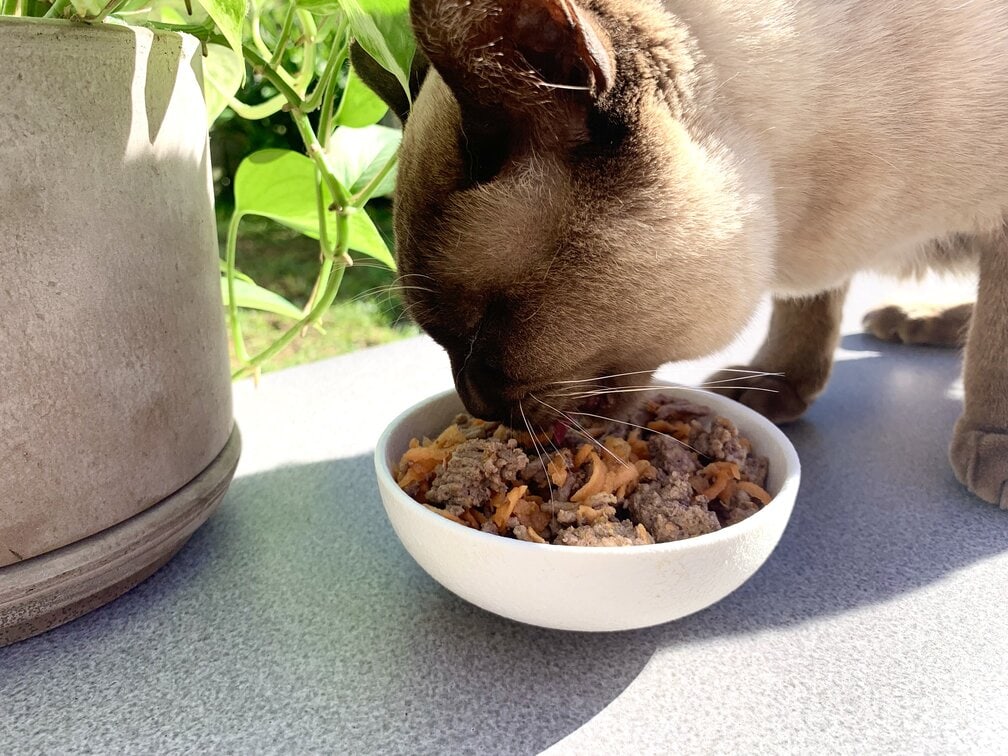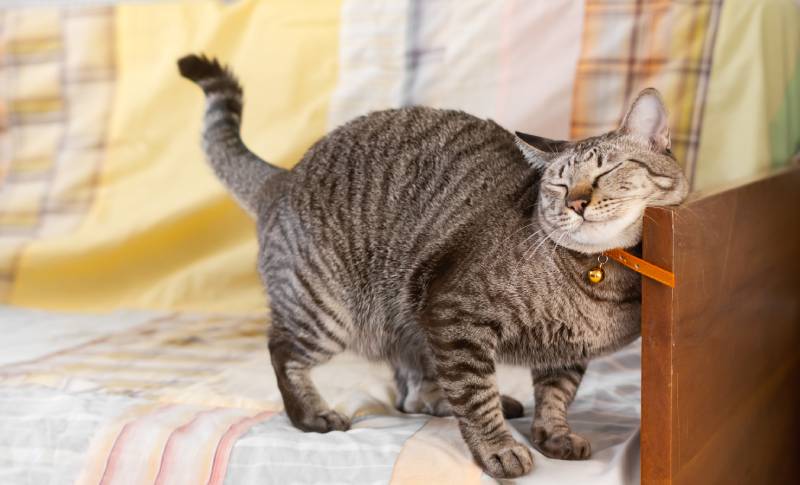How Much Does It Cost to Own a Cat? (2024 Update)
Updated on
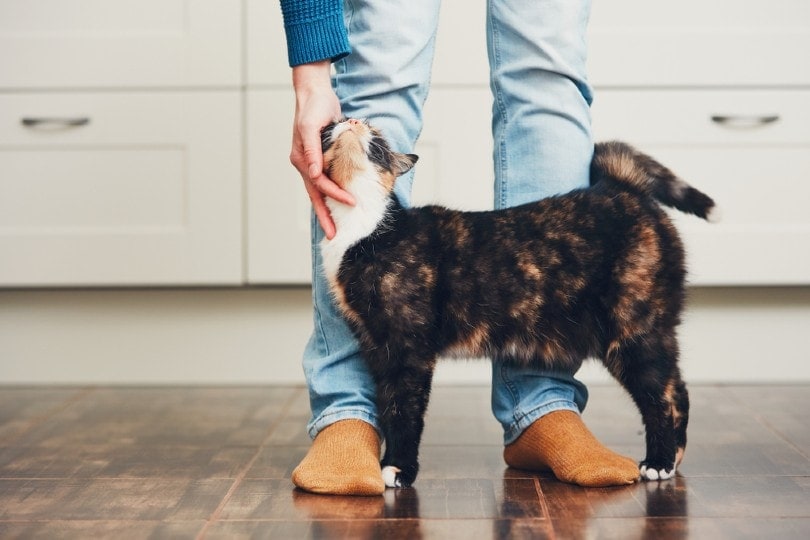
Owning a cat can be a fun and rewarding experience. They greet us at the door, chase red dots, rub against our legs, and curl up in our laps. Cats can brighten our day with their meows, especially if we’ve had a particularly bad day, and they keep us laughing at their peculiar and unusual habits. Cats are interesting creatures, but most are lovable and entertaining.
However, owning a cat means additional monthly costs you’ll need to consider before bringing a new cat into your household. It’s wise to budget the expenses so you have an excellent idea of your costs to ensure they fit into your budget. In this guide, we’ll discuss what type of costs you’ll be looking at, supplies, and an estimated yearly vet cost to help you decide if you’re ready to bring a cat into your life.
Bringing Home a New Cat: One-Time Costs
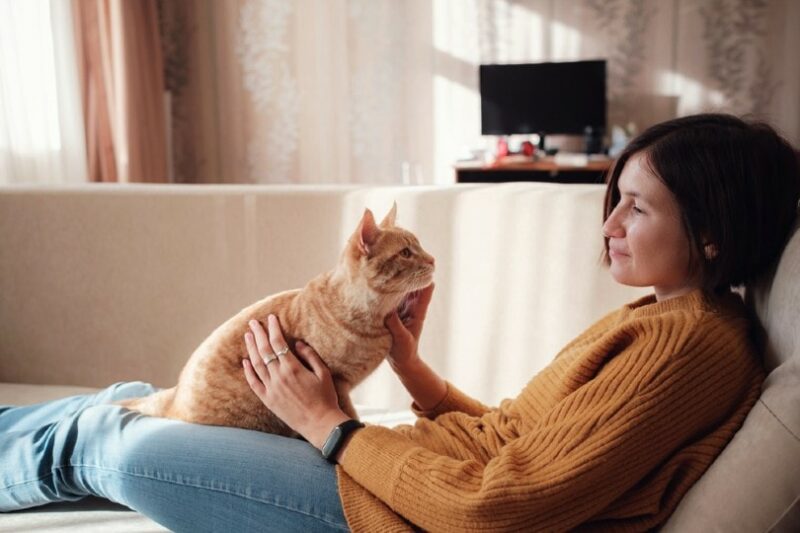
Bringing home a new cat does come with initial one-time costs. Usually, the one-time cost will be the price you pay to buy from a breeder or if you acquire the cat for free, which we’ll get into next in this article. Some “one-time” costs with cats may include microchipping and purchasing a pet carrier. You’ll need to replace their bedding, collars, and things of the like at some point in your cat’s life; however, you may get away with buying litter boxes once. Nonetheless, let’s break everything down to help give you ideas on costs.
Free
Sadly, many cats without homes roam the earth, and your chances of adopting a cat for free are high. According to PETA, there are roughly 60 to 100 million homeless cats in the United States alone. Some homeless cats wind up on a nice human’s doorstep because that human puts out food and water for the cat, and sometimes, the cat gets lucky, and that human ends up keeping the cat; others are not so lucky. The point here is if you want a cat for free, you don’t need to look far.
Adoption
$15–$200
Adoption fees vary greatly depending on your location, but you can expect an estimated $15 to $200 adoption fee from an animal shelter. These fees usually cover spaying/neutering, food, vaccines, and overall care. Some animal shelters waive the adoption fee for senior cats 8 years and older, while some may still charge a fee but at a reduced cost. 3.2 million cats arrive in animal shelters yearly in the United States, and if you want to provide a cat with a loving home, your local animal shelter is the way to go.
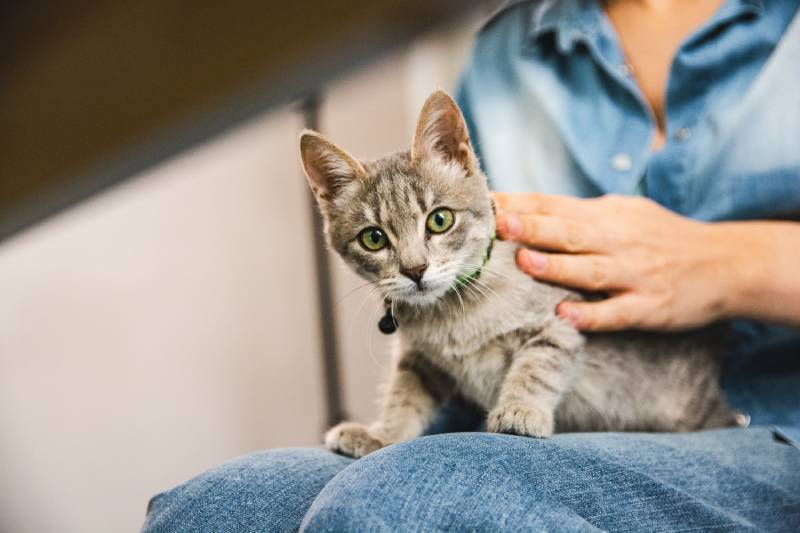
Breeder
$500–$3,500
The price you’ll pay from a breeder will vary depending on the cat breed you’re after. For example, Ragdoll cats are one of the most expensive cats to buy, while other purebreds are more affordable. When you buy from a breeder, you’re paying for a purebred cat, which will cost much more. Make sure you buy from a reputable breeder because that’s what you’re paying for.
You can always check with your local animal shelter, even if you’re after a particular breed. Purebred cats end up in shelters for different reasons, such as divorce, a change in housing, etc. In the end, you’ll pay much less.
Initial Setup and Supplies
$50–$500
It’s hard to decipher how much your initial setup and supplies will cost, but we can give you an idea. Your new feline pal will need a bed, food, a litter box (maybe two), a collar, and other necessities. Below, we put together a chart to help you estimate the costs of certain must-haves. Let’s take a look:
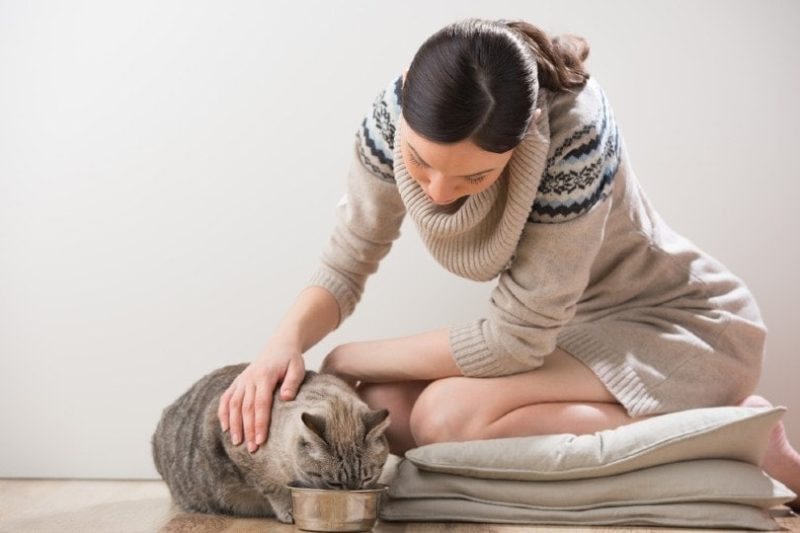
List of Cat Care Supplies and Costs
| ID Tag and Collar | $20 |
| Spay/Neuter | $250 (cheaper with a nonprofit vet service) |
| X-Ray Cost | $150–$250 |
| Ultrasound Cost | $300–$500 |
| Microchip | $45–$55 |
| Teeth Cleaning | $100–$400 |
| Bed/Pet Carrier | $30 |
| Nail Clipper (optional) | $7 |
| Brush (optional) | $8 |
| Litter Box | $15–35 |
| Litter Scoop | $10 |
| Toys | $30 |
| Carrier | $40 |
| Food and Water Bowls | $10 |
How Much Does a Cat Cost Per Month? (Recurring Costs)
Necessities
$50–$100 per month
Many factors influence the monthly cost of owning a cat. Different cat foods have different prices, so the cost will vary depending on what cat food you feed. Treats are another cost to consider, as well as toys and monthly flea, tick, and heartworm prevention.
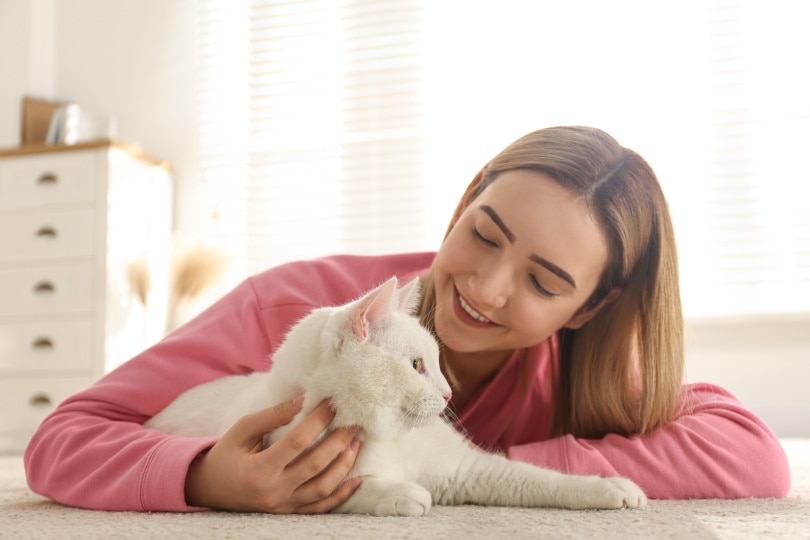
Health Care
$50–$100 per month
Your cat’s health is important, which means you will have healthcare costs. The costs per month will depend on your cat’s overall health. You will obviously spend less per month if your cat is healthy, but the price will be higher if your cat is sick. It really depends on your cat’s overall health, cat breed, and age.
It’s also important to keep your cat’s dental hygiene needs in check. Brushing your cat’s teeth is an excellent way to keep the teeth and gums healthy, which in turn will save you expensive vet bills for dental surgeries. If your cat does not fancy getting its teeth brushed, you can purchase dental treats for your cat.
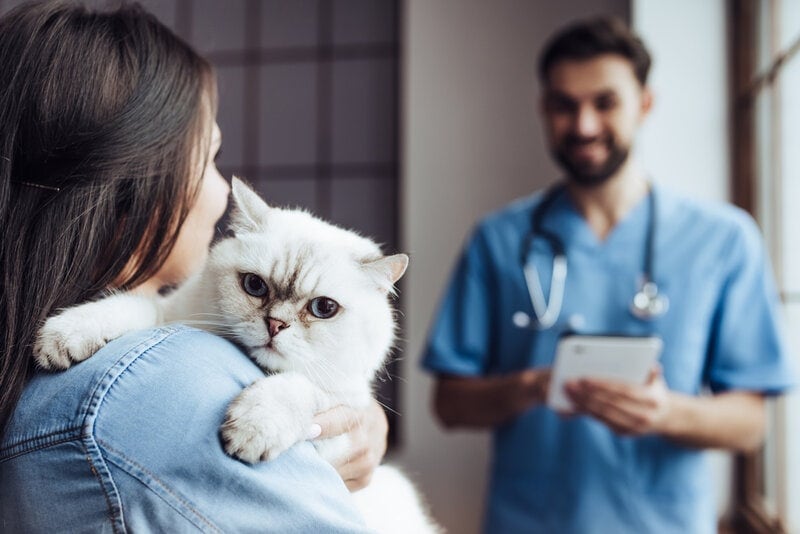
Food
$10–$40 per month
Your cat’s overall health starts with a complete and balanced diet. Prescription diets are more costly, and the price you’ll spend per month on food will vary depending on your cat’s health. Food for healthy cats averages $15 to $60 per package. Prescription cat food can cost roughly $90 per bag, but the bag may last a while, depending on how much your cat eats each feeding session.
Grooming
$30–$70 per month
Grooming your cat ranges from $30 to $70 for each session, depending on where you go and your location. The price usually fluctuates depending on the services you want. For example, most places offer a basic service but charge extra for nail trimming, ear cleaning, and teeth brushing.
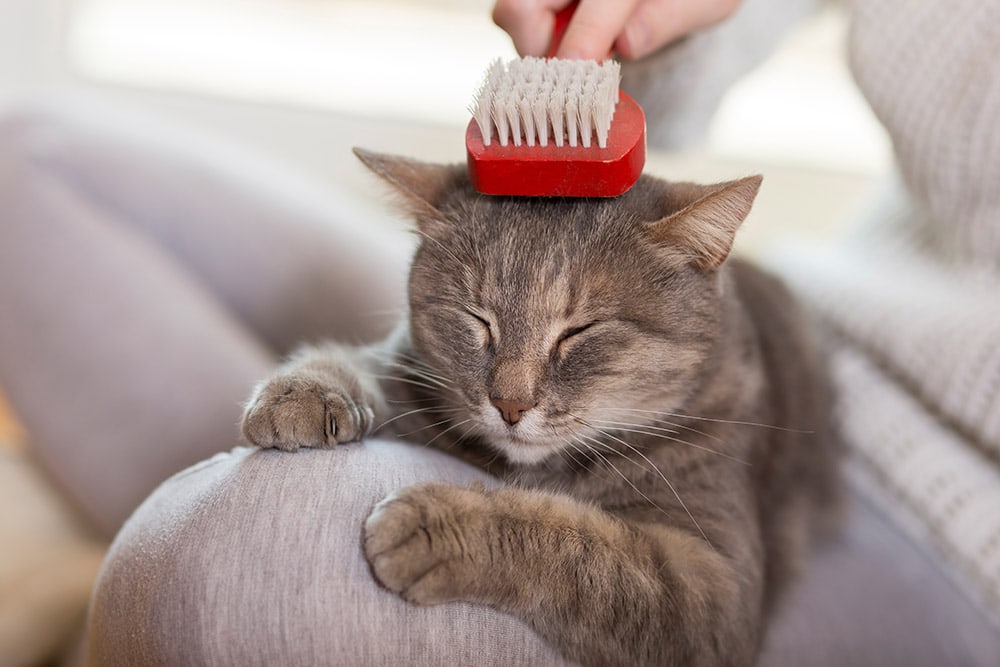
Medications and Vet Visits
$30–$200 per month
Hopefully, you won’t have a monthly vet visit, but you will need to provide monthly flea, tick, and heartworm prevention. Some products are more expensive than others, and the price will depend on the products you use. For sick cats, you will have more expenses each month, depending on the issue. Some cats may require monthly monitoring for diabetes, cancer, or other illnesses, and others may require monthly medication for certain medical conditions.
Pet Insurance
$12–$46 per month
Pet insurance can save you thousands of dollars in vet bills. Diagnostic testing, blood work, X-rays, and medications can be costly, but with pet insurance, a portion of those charges will be covered under the pet insurance plan. Cats are generally cheaper to insure than dogs, and the younger your cat is when you buy the policy, the cheaper it will be. Your location and the insurance company you choose will also fluctuate the costs.
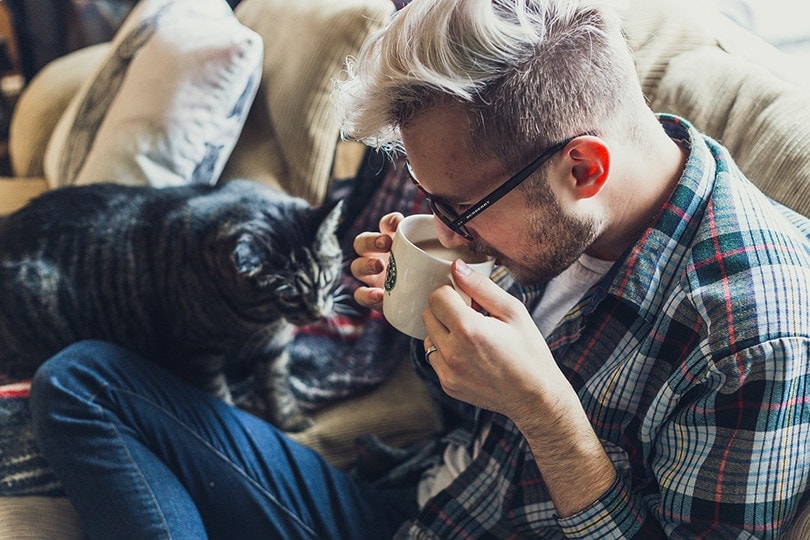
Environment Maintenance
$12–$30 per month
Cat litter is definitely a monthly expense and an important one. You’ll need to clean your cat’s litter box by replacing the litter every 2 to 3 weeks for clumping litter and twice a week for clay litter. You’ll need to purchase a scooper to clean the litter box daily, which helps keep it clean and sanitary for your cat. Let’s look below for an estimate of costs:
| Litter box liners | $4–$20/month |
| Deodorizing spray or granules | $5/month |
| Cardboard Scratcher | $6–$14/month |
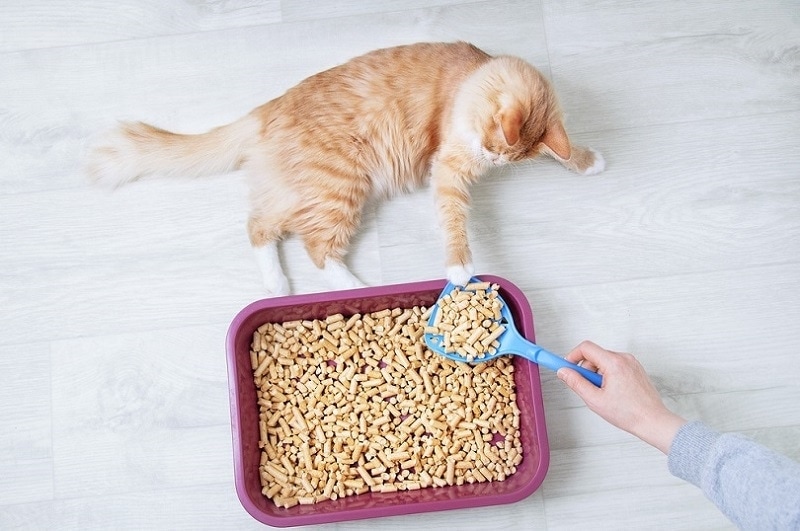
Entertainment
$5–$24 per month
Most cats love to be entertained, and you have several options for this. Subscription cat boxes are available where you can set up receiving a monthly box to keep your cat surprised and happy. Some cats go through toys more than others, but cat toys are relatively inexpensive.
Scratching posts are an excellent way to keep your cat’s nails in shape, and it’s fun for your cat! Hopefully, you won’t have to replace a scratching post monthly, but most allow you to replace the cardboard part or sisal, depending on how it’s made.
Total Monthly Cost of Owning a Cat
$50–$200 per month
By now, you should have an idea of the total monthly expenses you can expect with owning a cat. You’ll need food, treats, cat litter, litter box liners, toys, and monthly flea, tick, and heartworm medication. All these items are essential in keeping your cat happy and healthy, and you’ll need all of these items monthly.
Additional Costs to Factor In
When you own a pet, you will have additional costs to factor into your budget. Vacations are a must to get away from it all, but if you have a pet, you must line up a pet sitter or at least someone to come by and feed your cat and ensure the litter box is clean.
Emergencies happen, and they usually hit out of left field. You never know when your cat may fall ill or injure itself, requiring medical treatment. Other factors involve boredom; a bored cat can get into mischief, and you may have to repair a damaged wall that suffered the wrath of your cat’s claws, or maybe your cat destroyed your baseboards, and they need to be replaced. Speaking of such, behavioral training may be needed if you have a rambunctious kitty, all of which costs money.
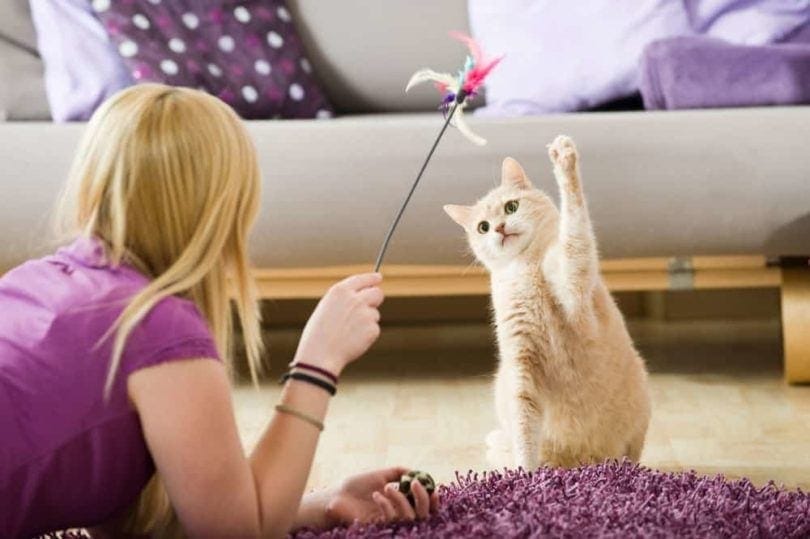
Owning a Cat On a Budget
It’s possible to own a cat on a budget. After all, many cats need loving homes, and owning a cat should never be out of reach. Putting money back here and there every month is an excellent way to build up a cat fund. Even if you put back $20 per month, you can save enough to cover your cat’s annual checkup. Even if you purchase health insurance for your cat, you’ll still have to pay for the vet visit, as most do not cover annual checkups, and if they do, they charge extra a month.
You don’t have to buy the most expensive cat food on the market to feed your cat a healthy diet, and cat toys are inexpensive compared to dog toys. Keep harmful objects away from your cat, such as toxic plants, and keep your cat’s dental hygiene in check with inexpensive dental treats.
Saving Money on Cat Care
It’s important to keep your cat’s overall health in excellent condition to prevent expensive vet bills. Don’t skimp on healthy and nutritious food for your cat (remember your cat’s overall health starts with nutrition), and look for coupons for savings. Buy in bulk if possible, and if you opt for a cat box subscription, schedule every other month rather than monthly to save on costs.

 Conclusion
Conclusion
Owning a cat doesn’t have to break the bank. If you’re thinking of getting a cat, save up a fund for one-time expenses and also save monthly to cover monthly costs. As we’ve stated, put at least $20 into a cat savings fund to cover some of the monthly expenses, and this will also help with annual vet costs. By saving for one-time purchases before you bring your cat home, you’ll be lifting any financial burden for purchasing these items that include a litter box, a collar, a microchip, a bed, and a pet carrier.
You’re looking at roughly $50 to $100 per month to own a cat, and that includes food, cat litter and liners, treats, toys, and flea, tick, and heartworm medications. Pet insurance is another monthly expense if you decide to get one, but it can save you money in the long run if your cat gets injured or sick. Keep in mind that cat insurance is cheaper than dog insurance. Put money back when you can, and don’t forget to give your feline furball lots and lots of love!
See also:
Featured Image Credit: Jaromir Chalabala, Shutterstock

